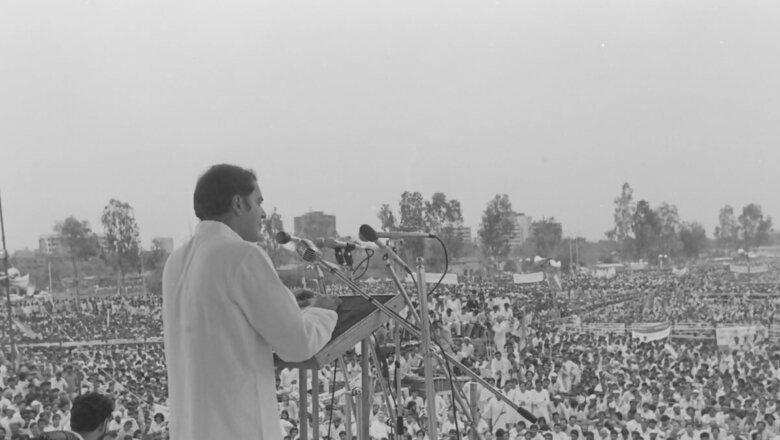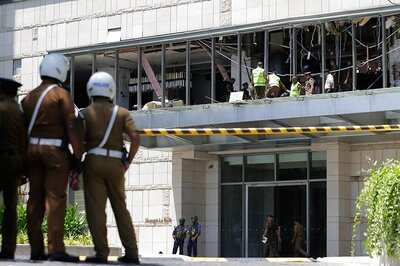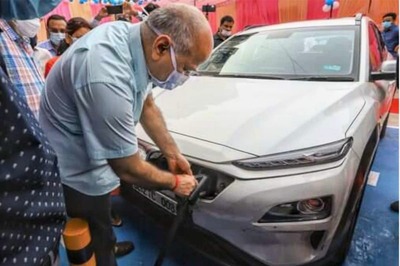
views
This is the third part in a 3-part series by Nalin Mehta on the Karnataka elections. Read Part 1 here and Part 2 here.
It was a political decision made by Rajiv Gandhi over three decades ago, but it remains a major talking point in Karnataka elections 2023. Few may remember Veerendra Patil today, but his unceremonious dismissal as Karnataka chief minister in 1990 paved the way for BJP’s first inroads into the state in the 1990s, with the state’s influential Lingayat voters.
Now, in 2023, with the BJP aiming to safeguard its Lingayat vote-base and the Congress looking to break into its citadel, the Veerendra Patil story keeps coming up again and again on the campaign trail.
With the Congress accusing the BJP of neglecting Lingayats, who make up 17-19% of the state’s voters, Prime Minister Narendra Modi has more than once harked back to the Veerendra Patil incident on the Karnataka campaign trail. “History is proof of how leaders like S Nijalingappa and Veerendra Patil ji were insulted before the Congress family,” argued Modi recently at an event in Belagavi. Union Home Minister Amit Shah has also made the same point since.
So, who exactly was Veerendra Patil? And why does his name matter in the current political discourse?
Veerendra Patil, Rajiv Gandhi and BJP’s First Lingayat Breach in Karnataka
Veerendra Patil was the Congress chief minister of Karnataka at the time of the great Congress split of 1969. He chose to leave the party with another two-time former chief minister, S Nijalingappa. Patil continued as Karnataka chief minister in the Congress (O) that was formed in opposition to Indira Gandhi’s Congress (I), before losing the elections in 1972.
After the Emergency, when Indira Gandhi contested a by-election from Karnataka’s Chikmagalur in 1978, Patil, who had by then moved to the Janata Party, was chosen to stand against her. Indira won easily, giving birth to the famous poll slogan ‘Ek Sherni Sau Langur, Chikmagalur Bhai Chikmagalur’ (One tigress, 100 langurs, Chikmagalur brother Chikmagalur).
In 1980, when Indira Gandhi returned to power, Patil was among the Lingayat leaders who returned to the Congress. As part of the Congress’s outreach to Lingayat voters, Patil was appointed Karnataka chief minister again in 1989. This was the first time such apex leadership was given to a Congress Lingayat leader in two decades.
His subsequent unceremonious removal from power in 1990 by Rajiv Gandhi, similarly, came to signify an important turning point in Karnataka politics.
It was seen by many in the community as an insult to Lingayat pride and heralded the first breach by the BJP into the community’s vote. A year later, in the parliamentary elections, it won the party its very first victories in Karnataka.
In October 1990, communal riots broke out in some parts of Karnataka. Patil, who had just suffered a minor stroke, was convalescing at home. Congress leader Rajiv Gandhi, having recently lost the 1989 elections, decided to cut short the Sadbhavana Yatra he had embarked upon in north India and make a sudden, ‘unexpected’ visit to Bangalore to take stock.
After a helicopter ride to the riot-hit Channapatna town on October 7, he met Patil at his home and drove back to Bangalore airport to board a chartered aircraft. Outside the airport’s VIP lounge, Gandhi met with waiting reporters.
One of them asked him when the state government would start functioning properly again. Gandhi replied, “In four days”. Before the startling announcement could be fully digested, he added that the Congress Legislature Party would meet in a couple of days to “elect a new leader” and that Patil “was not really well” and had “agreed to step down”. As he took their leave, Rajiv Gandhi added, “You have got good copy”.
Gandhi had no doubt expected that the change of guard would be smooth.
But Patil fought back, and publicly. He invited journalists and a Doordarshan TV crew to his house. He told them that, while he had been temporarily unwell, his faculties were intact and he would keep working as chief minister. Speaking to DD, Patil was “more or less declaring war against his own party”. “I was not asked to step down and I am not stepping down,” he said in his televised speech, adding that the leadership issue “did not arise” when Gandhi had met him.
With the chief minister remaining adamant, the Congress calling a legislators’ meeting to elect a new leader and both sides claiming to have the required numbers, President R Venkataraman declared President’s Rule in the state on October 10, after duly seeking advice from Governor Bhanu Pratap Singh.
VP Singh was then serving as prime minister of a Janata Dal-led coalition government in Delhi. His party offered Patil unconditional support towards winning the floor test.
The airport sacking had become such a public spectacle that the prime minister now personally entered the debate, directly targeting Rajiv Gandhi. He released a statement saying, “Despite its huge majority in the house, the Congress government had been destabilised by the party president, Mr Rajiv Gandhi.”
Eventually, however, Patil lost the battle. S Bangarappa was elected as his replacement and President’s Rule was finally revoked on October 17.
The drama around Patil’s public humiliation handed the BJP a vital opening: it created a new narrative of injured Lingayat pride.
Around this time, BJP’s BS Yediyurappa, who had started as an RSS pracharak and entered politics with the Jan Sangh, was just beginning to establish his credentials as a Lingayat leader. Yediyurappa, then president of the party’s state unit, declared that Patil’s removal by Rajiv Gandhi was the “most uncultured way to treat a chief minister”.
A year after the Patil incident, in the 1991 parliamentary elections, the BJP opened its account in Karnataka, winning four seats.
Many Lingayat voters saw Patil’s removal as a sign of the eclipse of Lingayat power in Karnataka. “That incident with Patil changed things forever and helped BJP in 1990,” a BJP leader told me.
The Lingayat vote did not shift immediately, nor can it be regarded as a monolith. However, the Patil incident began a process whereby, through the 1990s, a major chunk of Lingayat voters, who had initially shifted to the Janata Party in the 1980s, gradually began moving to the BJP.
Over time, it came to form a solid caste-based block that served as the fulcrum of the BJP’s growth in north and central Karnataka. The Lingayat vote was particularly potent for the party because it was concentrated in about 70 seats, with influence in another 30.
Winning the Lingayat vote heralded the making of the BJP in Karnataka. And that is why Veerendra Patil remains a constant refrain for the party’s leaders.
Nalin Mehta, an author and academic, is the Dean of School of Modern Media at UPES University in Dehradun, a Non-Resident Senior Fellow, Institute of South Asian Studies at the National University Singapore, and Group Consulting Editor, Network 18. He is the author of The New BJP: Modi and the Making of the World’s Largest Political Party.
Read all the Latest Opinions here


















Comments
0 comment